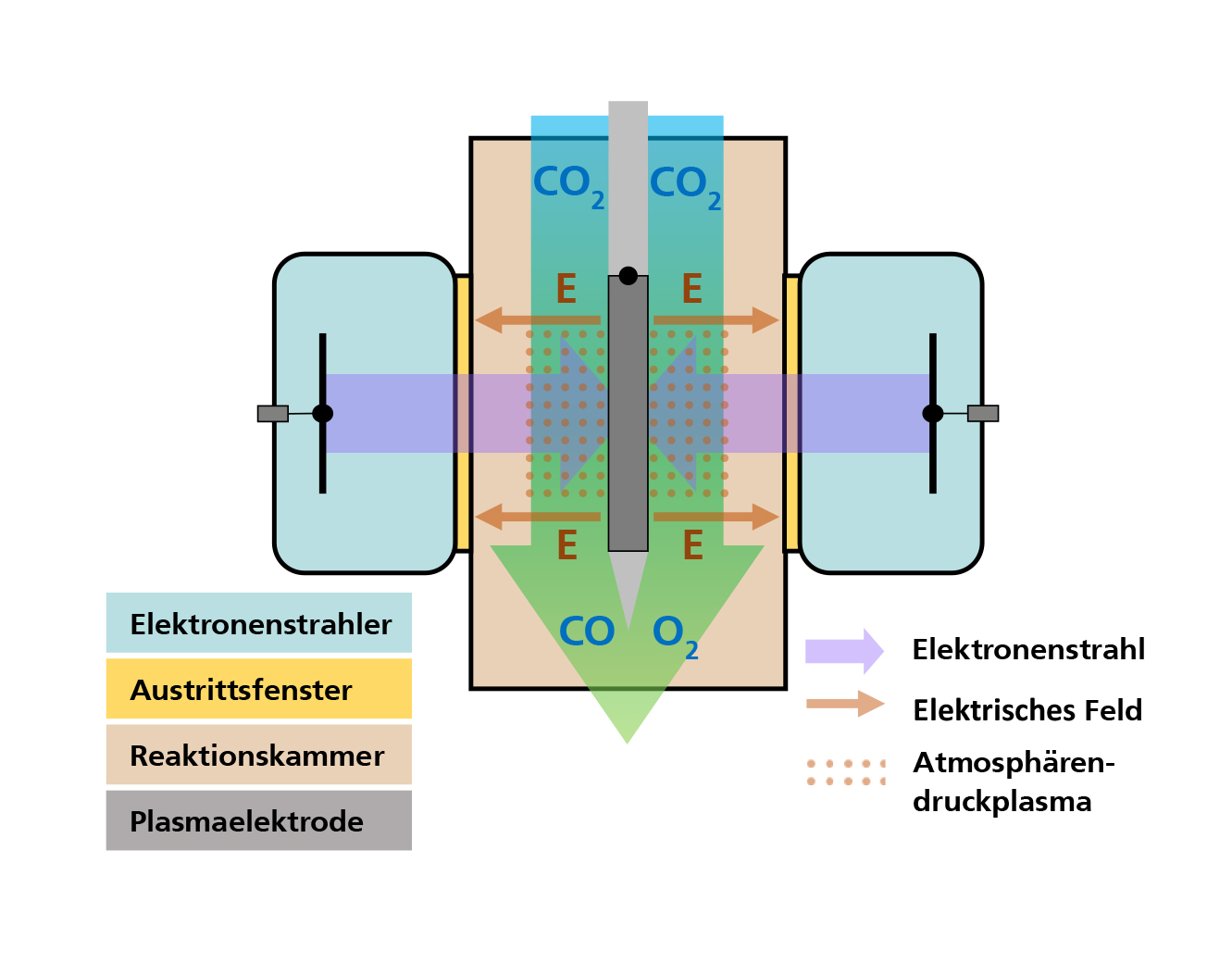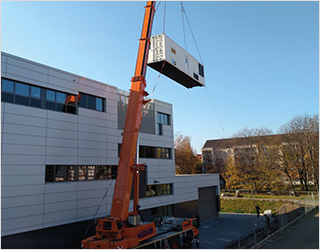As a strategic investment of the Fraunhofer FEP, the mobile test facility TABEA was realized with the company CREAVAC for the purification of exhaust gases and waste water as well as for plasma-chemical PtX synthesis processes based on various electron beam technologies.
Effective climate protection is a major challenge of our time and requires a general move away from the extraction and use of fossil carbon sources in the medium term, not only as an energy source but also as a raw material for the chemical industry. Switching the energy supply to renewable sources requires efficient storage technologies on a large scale in order to compensate for seasonal fluctuations in particular. Chemical energy storage systems are indispensable for this. A defossilized supply of raw materials requires the development of a carbon cycle economy in which the material use of CO2 as an educt of chemical syntheses will play a key role.
In this context, the Fraunhofer FEP has set itself the goal of demonstrating the conversion of carbon dioxide, e.g. with (future green) hydrogen in atmospheric electron beam plasmas, as well as the favourable energy efficiency and conversion rates of this novel, large-scale scalable PtX process (Power-to-X, i.e. the production of chemical energy storage and product raw materials using regeneratively generated electrical energy). This approach is based on the fact that the stimulation required to overcome the energetic or kinetic inhibition of exothermic reactions as well as the energy supply for endothermic reactions is not only possible thermally, but also in plasmas by directly and selectively influencing the binding states of molecules. The key to high energy efficiency is that the plasmas are thermodynamically in non-equilibrium, which makes it possible to keep the global temperature in the plasma low despite effective excitation of the chemically active species. Atmospheric electron beam plasmas are also characterized by their uniform energy density and volume filling, which also promises high degrees of conversion.
 Fraunhofer Institute for Electron Beam
Fraunhofer Institute for Electron Beam
